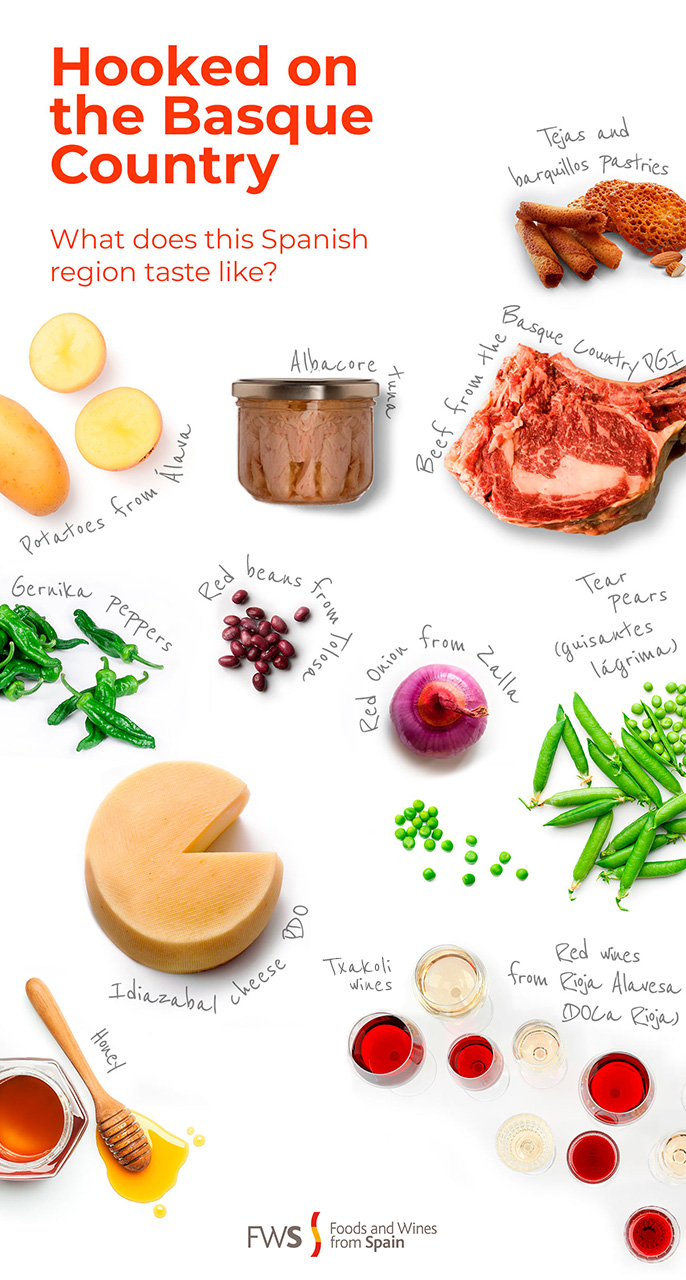.png.transform/rendition-xs/image_image%20(1).png)
What Does the Basque Country Taste Like?
There is no doubt as to the culinary prestige of this region, located in northern Spain along the French border. Dozens of Michelin stars, an important tradition of fishing, agriculture and stockbreeding; a passion for gastronomy, and excellent wines that can be found all over the world. These are the flavors of the Basque Country.

Gastronomically speaking, the Basque Country is one of the number one destinations for tourists in Spain. This says a lot, and some of it has to do with the fact that, despite its small size (just three times bigger than Luxemburg), this region hosts the world’s largest concentration of Michelin stars per square kilometer. Restaurants like Akelarre, Martín Berasategui, Azurmendi, Arzak, Mugaritz and Nerua Guggenheim are just a few of the many establishments here that have been blessed by the Michelin Guide—and their names are certainly familiar to food and travel lovers all over the world. Another reason has to do with the variety and extreme quality of the Basque foods and wines that are featured in this infographics—true delicacies for fans of first-rate gastronomy.
The maritime and fishing traditions of the Basque Country can be seen in its restaurants and markets. Basque people are skilled at buying and cooking fish, with some of the most recognized dishes being bacalao al pil-pil (cod in pil-pil sauce), merluza en salsa verde (hake in green sauce), and rodaballo a la parilla (chargrilled turbot). This same maritime tradition also includes the production of excellent fish preserves, among which the most famous are bonito del Norte (albacore tuna) and anchovies in extra virgin olive oil.
There is a huge amount of respect for the work of farmers in the Basque Country, or paisanos, as they are popularly known. Lettuce from Monte Igueldo in San Sebastián, Swiss chard from Derio, red onions from Zalla (a product protected by the Slow Food Movement’s Ark of Taste designation), peppers from Gernika, Ibarra guindillas, and potatoes from Álava, are just some of the most admired Basque crops. There is another, however, that has achieved an almost “sacred” status: guisantes lágrima (teardrop peas), a type of pea that can only be eaten during a very few weeks in springtime. These very tiny (hence the name) peas are exquisitely tender and have a slightly sweet taste.
Stockbreeding in the Basque Country also has a lot to offer gastronomes, from the region’s top-quality beef to the local free-range chickens, which roam the countryside feasting on 100% natural feed. Another important product is the pork from the local Euskal Txerria pig breed. And of course this tour of the Basque pantry would not be complete without mentioning the local latxa sheep. In addition to the excellent quality of their meat, the ewe’s milk from this breed is used to make this region’s world-renowned, raw sheep’s milk cheese par excellence: queso Idiazabal.
One option to accompany all of these gastronomic delights would be any of the delicious craft beers that are brewed in the Basque Country; another would be its sparkling traditional cider, or the excellent wines that are made in La Rioja Alavesa, an area of the Basque Country that forms part of Quality Denomination of Origin Rioja. And finally, we can lift our glasses in honor of the true wine revolution that has taken place here in recent years, that of Basque txakoli, a wine that has skyrocketed in terms of quality, sales and prestige, thanks to the hard work of grape growers, wine makers and the Denominations of Origin Txakoli de Getaria, Txakoli de Vizcaya and Txakoli de Álava.
Cheers!
Text: Rodrigo García Fernández /@ICEX
Translation: Adrienne Smith /@ICEX


